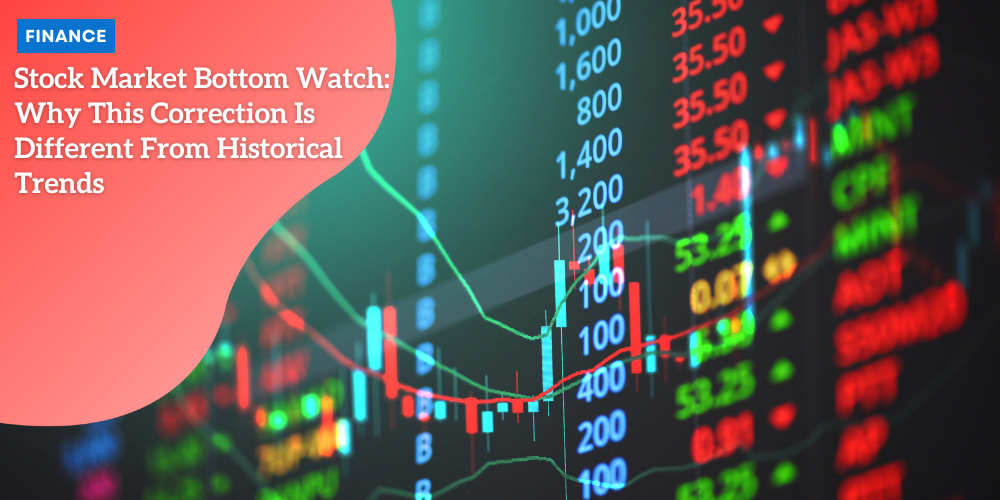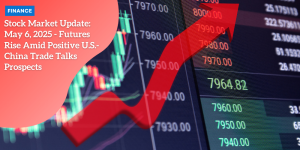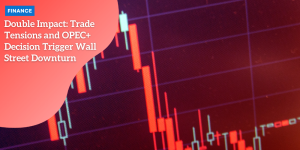Stock Market Bottom Watch: Why This Correction Is Different From Historical Trends

Introduction: The Current Market Correction
S&P 500’s Decline Since February’s Peak
The S&P 500 has experienced a significant decline since reaching its peak in February. S
Anúncios
parked primarily by President Trump’s announcement of a trade war, the index revealed itself vulnerable to the unpredictable shifts in policy.
As of now, the S&P 500 remains 12.5% below its February high.
This decline has instilled a sense of uncertainty among investors, signaling a phase where the market is still seeking its bottom, a phenomenon corroborated by historical insights.
Anúncios
Current Market Status
As we navigate through this correction, it’s essential to understand precisely what a correction entails.
A correction is defined as a decline of 10% or more from a recent peak but less than 20%.
This term contrasts with a bear market, which denotes a more severe downturn—specifically, a drop of 20% or more from a peak.
Anúncios
Presently, the S&P 500’s standing 12.5% below its February high firmly categorizes this phase as a correction rather than a bear market.
Investor Reactions and Market Sentiment
The S&P 500 has shed a staggering $6.5 trillion in market value since its record high in February, according to Howard Silverblatt, a senior index analyst at S&P Dow Jones Indices.
This massive loss has left investors on edge, continuously speculating when the market might find a bottom.
Despite various expert analyses, the truth remains elusive—no one can predict for certain when the market will stabilize.
Historical Context and Future Implications
History often serves as a guide during times of market volatility.
There have been 24 corrections in the S&P 500 since World War II, and on average, these corrections take about 133 days to reach their bottom and another 113 days to recover.
However, this year differs significantly. It reached a potential bottom in just 48 days, much faster than the historical average.
The uniqueness of this correction, heavily influenced by White House policy, adds an unprecedented layer of complexity to market predictions.
As we delve deeper into understanding these historical patterns, they offer valuable insights into the potential directions the market may take.
Despite the rapidity and distinct nature of this current correction, examining past behaviors assists in shaping effective strategies for the future.
Understanding these dynamics is particularly crucial for investors aiming to navigate the current market landscape effectively.

Understanding Market Bottoms: A Historical Perspective
Historical Analysis
Since World War II, the S&P 500 has weathered 24 market corrections, each offering valuable insights into market behavior.
On average, these corrections have taken about 133 days to hit the bottom and around 113 days to recover fully.
This repetitive pattern across different economic contexts highlights a kind of resilience in market dynamics and suggests a predictable rhythm, even amidst apparent chaos.
Timeframes and Patterns
The standard timeframe of about four months to identify a market bottom provides a benchmark against which current market activities can be assessed.
This time-based pattern allows for a structured approach to market analysis, rooting expectations in the repetition seen across decades.
Typically, following such corrections, markets have shown a 113-day recovery period, reflecting an inherent cyclicality in financial markets.
Significance of Historical Data
Using historical data as a guide, traders and analysts can better anticipate potential outcomes by observing past trends.
Historical patterns act as a beacon in uncertain times, allowing for a more informed approach to decision-making.
While history doesn’t repeat exactly, it often rhymes, providing crucial insights into potential future movements.
Though the current correction has deviated from these historical timelines, it’s essential for investors to remain aware of these well-established patterns.
Understanding past market behaviors enriches one’s ability to navigate current uncertainties while preparing for potential future shifts.
Why This Correction Is Unusually Fast
A Record-Breaking Pace
This market correction has progressed at an unprecedented speed.
From the February peak to a possible bottom on April 8, it took only 48 days—a significant departure from the historical average of 133 days.
Also noteworthy is how quickly the correction was confirmed: just 22 days compared to the historical norm of 77 days.
Such rapid declines in financial markets generally tend to be brief and less severe, as noted by Sam Stovall, a leading analyst.
Historical data suggests that swift downturns might not be long-lasting, offering a glimmer of hope amid the turbulence.
The Impact of Policy-Driven Markets
One unique aspect of this correction is its trigger: a direct response to policy decisions, specifically the trade war initiated by the White House.
This scenario is uncommon as most corrections result from broad economic factors rather than specific policy actions.
The fast tempo of the market’s reaction underscores the volatility introduced by geopolitical uncertainties.
Investors and analysts are now in uncharted territory, attempting to navigate a market heavily influenced by policy decisions rather than traditional economic indicators.
As we continue to untangle the complexities of this correction, it’s crucial to keep an eye on upcoming developments that could further influence market behavior.
The Unique Factor: A ‘Manufactured Correction’
Rare Cause: White House Policy as the Primary Trigger
Unlike most corrections driven by broad economic factors, the current market correction is largely due to President Trump’s trade war announcement.
On February 19, the S&P 500 peaked before rapidly declining once Trump’s plan for tariffs was revealed.
This policy-driven correction illustrates how political decisions can significantly impact market behavior.
The S&P 500’s slump has been highly tied to the uncertainties surrounding trade policies.
Historically, corrections are seldom triggered by direct government action, making this scenario quite atypical.
How Policy-Driven Corrections Differ
Policy-driven corrections diverge from typical market downturns in several ways.
First, they tend to be faster and more volatile as markets react abruptly to policy announcements.
Unlike cyclical economic factors, policy-driven corrections hinge on the probability and timeline of policy changes, adding layers of unpredictability.
Market participants often struggle to gauge the severity and potential duration of the correction, leading to heightened volatility.
Unprecedented in nature, these corrections lack the typical phases seen in economically-driven downturns, altering the conventional recovery roadmap.
Unprecedented Nature of This Correction Compared to Historical Patterns
This correction unfolded in just 48 days, starkly contrasting the historical average of 133 days to reach the bottom.
The swift pace and policy-driven nature make it unique and challenging to predict.
Historical patterns have been relatively reliable in guiding investors through corrections, but this ‘manufactured correction’ steered by the White House’s actions adds a novel dimension.
CNN noted that such corrections follow a different trajectory, often resulting in short-lived and shallow declines as opposed to prolonged slumps.
This anomaly demands a keen focus on policy developments over traditional market indicators, emphasizing the transformative power of political decisions on market dynamics.
Navigating this exceptional correction requires a balanced approach marrying historical insights with real-time policy analysis.
Will the Market Retest Its April 8 Low?
Analyst Perspectives on Potential Retesting
The S&P 500’s lowest close this year was on April 8, when it sank to 4,982.77.
Some analysts believe we might revisit this low before a recovery.
Nick Colas, co-founder of DataTrek Research, notes that a significant shift in trade policy can reassure investors that the worst is over, potentially preventing a retest.
Ed Yardeni of Yardeni Research also predicts that this low could be tested again, offering a foundation for the market to form a bottom if support holds.
Historical Insights: The 1987 Crash
Examining the 1987 crash offers useful parallels. The S&P 500 fell 20.5% on October 19, then rebounded 14% over two days.
However, it later retested its October low in December before rallying through year-end. This pattern, where the market retests its lows, provides a precedent for today’s uncertainty.
| Scenario | Before April 8 | After April 8 (Indicating Bottom) |
|---|---|---|
| Trade Policy Developments | Uncertainty around White House tariff policies | Key changes in trade policy, indicating policy shifts and potential recovery |
| Market Sentiment | Investor sentiment was defensive, favoring safer stocks | Shift towards cyclical stocks, indicating optimism and market recovery |
| Volatility Index | High levels of investor fear as measured by the Volatility Index | A decrease in volatility, signaling reduced fear and market stabilization |
| Index Range Levels | S&P 500 levels at a significant lower range, below key resistance | Monitoring critical levels between 5,100 and 5,500 for significant breakouts |
By analyzing these variables, investors can better determine if the market is stabilizing or preparing for another dip.
Understanding these factors is essential for navigating the unpredictable waters of market behavior.
Recovery Scenarios: V-Shape vs. Sideways Movement
Contrasting Recovery Patterns: Swift V-Shaped Recovery vs. Lateral Movement
When analyzing potential recovery scenarios for the stock market, experts generally consider two prevalent patterns: the V-shaped recovery and the sideways movement. A V-shaped recovery represents a rapid and robust rebound after a sharp decline.
Historically, we have seen that swift descents are more likely to lead to quick recoveries, embodying the V-shape pattern. Indeed, during the 2023 correction, the S&P 500 hit bottom on October 27 and surged back within just 24 days.
On the other hand, a sideways movement describes a more gradual and prolonged stabilization phase where the market oscillates within a particular range before resuming an upward trend.
Analysts are cautious to predict an immediate V-shaped recovery this year, given the ongoing market uncertainties and lack of strong recovery indicators.
Key Indicators Analysts Are Watching
Several key indicators are pivotal in discerning the recovery’s trajectory:
- Defensive vs. Cyclical Stocks: Analysts like Adam Turnquist note that investor behavior is currently defensive, indicating caution rather than the optimism usually seen in the early stages of a V-shaped recovery.
- CBOE Volatility Index (VIX): Known as the market’s “fear gauge,” the VIX hit its highest level on April 8 this year. Larry Tentarelli highlights that high volatility often precedes a base-building phase, supporting the idea of potential lateral movement.
- S&P 500 Range Levels: Analysts are closely watching the 5,100 to 5,500 range levels. The index is currently mid-range, and a breakout on either side could signal the next significant market move.
Critical S&P 500 Range Levels
A key focal point for market watchers lies between the S&P 500 range levels of 5,100 and 5,500.
Where the index currently hovers around this range will likely set the stage for the market’s next leg up or down.
Tentarelli argues that breaking above or below these levels on a closing basis might indicate the market’s future path.
Navigating these scenarios involves monitoring diverse factors and understanding how they fit within broader historical contexts.
The subsequent discussion on mixed signals, such as bullish and bearish indicators, will delve deeper into the conflicting signs shaping market sentiment.
Mixed Signals: Bullish and Bearish Indicators
Navigating the current market correction comes with its own set of challenges, primarily due to the mixed signals investors are grappling with.
On one hand, there are positive signs suggesting we may have passed the peak of market fear.
For instance, the CBOE Volatility Index, the so-called “fear gauge” of Wall Street, peaked earlier in April, hinting at stabilized investor sentiment.
Also, the persistent bearish sentiment can be viewed as a contrarian indicator, where widespread pessimism inadvertently signals that a turnaround might be on the horizon.
However, not all signals are optimistic. A concerning development for many investors is the appearance of the “death cross” pattern.
This ominous technical analysis indicator occurs when the 50-day moving average of a stock or index falls below its 200-day moving average, often interpreted as a sign that more selling could be forthcoming.
Despite these conflicting indicators, interpreting them requires a balanced approach.
It’s crucial for investors to consider both historical precedent and the unprecedented factors shaping the current correction, such as the policy-driven nature arising from the trade war.
Understanding these dynamics may help in making informed decisions during this volatile period.
As we progress amidst these uncertainties, the focus will inevitably shift towards strategies for navigating this unpredictable market climate, particularly how policy developments might impact investor strategies.
What Investors Should Consider Moving Forward
Navigating through this unique market correction requires a thoughtful approach, given its unprecedented nature and the historical context provided.
Investors should brace themselves for the unexpected while keeping an eye on several key factors.
Strategies for Navigating This Unique Market Correction
To manage the uncertainty and volatility inherent in this market correction, investors might consider diversifying their portfolios.
This means balancing between defensive and cyclical stocks.
Defensive stocks, such as those in consumer staples and healthcare, generally perform well during uncertain times.
On the other hand, cyclical stocks, found in industries like technology and consumer discretionary, thrive when the economy is growing.
Additionally, it’s crucial for investors to maintain a long-term perspective.
While short-term market movements can be stressful, history shows that markets eventually rebound.
Patience and prudence often yield better results over time.
The Importance of Monitoring Policy Developments
Given the unique trigger for this correction—the White House’s trade policies—staying informed about policy changes is vital.
Investors should closely follow news and announcements related to trade agreements, tariffs, and international relations.
Policy shifts can significantly influence market sentiment and cause abrupt movements similar to what has been experienced recently.
Financial news outlets, government announcements, and market analysis platforms are valuable resources for staying updated.
Certain firms, like DataTrek Research, highlight how policy developments impact investor sentiment and market trends.
Balancing Historical Patterns with Unprecedented Nature
While past market behavior provides valuable insights, this correction has defied some historical norms.
The rapid pace of this downturn and its unique cause mean that investors should be cautious about relying solely on historical patterns.
Nonetheless, understanding these patterns can offer a benchmark to measure current developments.
In previous corrections, such as those discussed by analysts, certain indicators like peak fear and bearish sentiment often signaled impending recoveries.
Continually assessing both historical data and current trends allows for a more comprehensive strategy.
Moving forward, keeping a balanced view between historical trends and current unprecedented factors is crucial.
This approach helps in forming a pragmatic yet flexible investment strategy apt for this volatile market climate.





